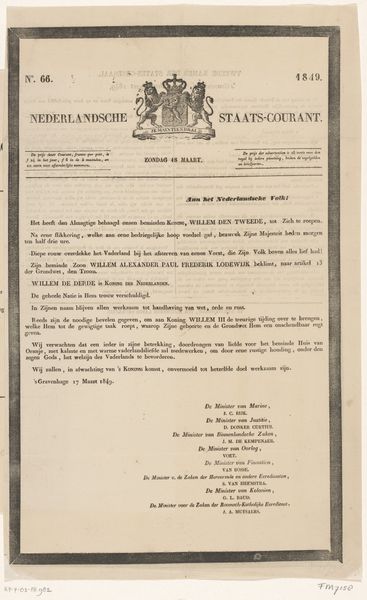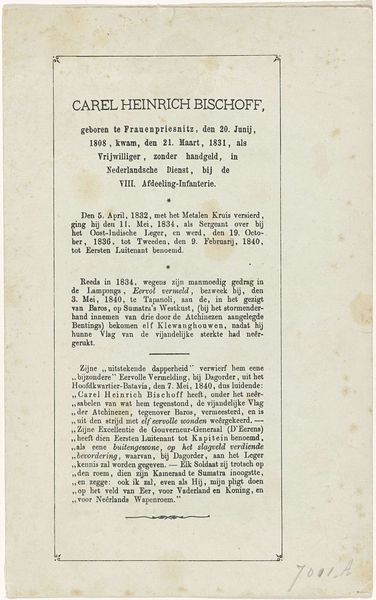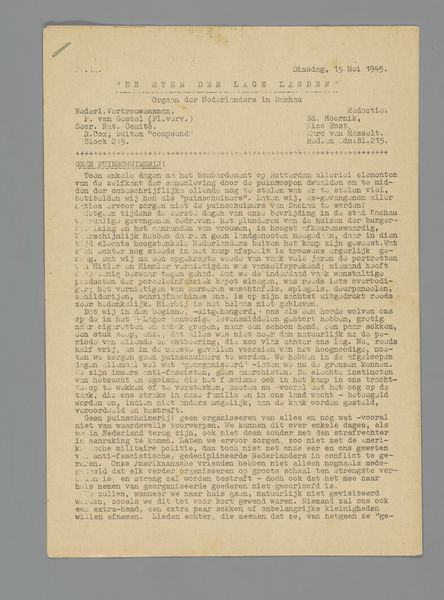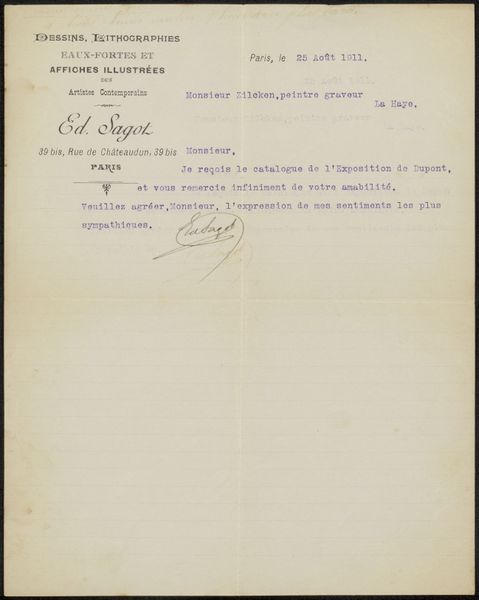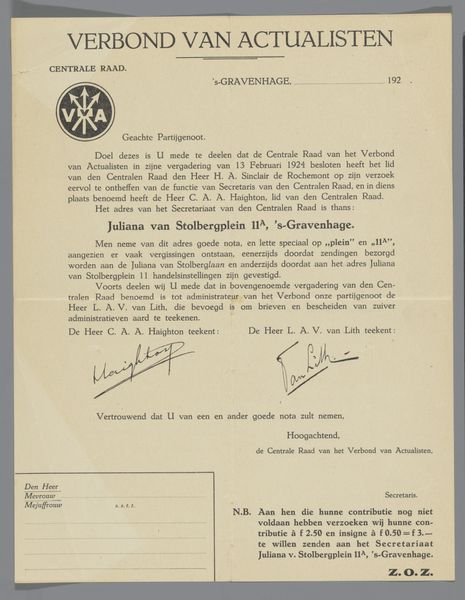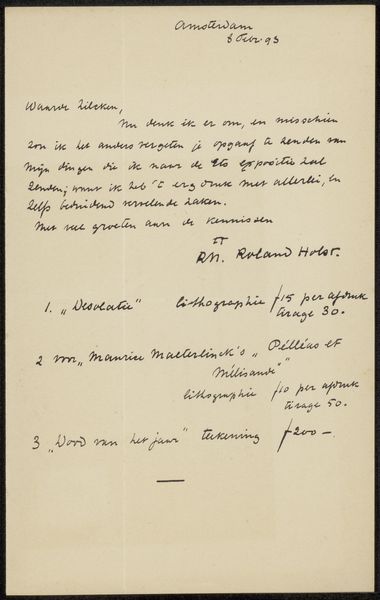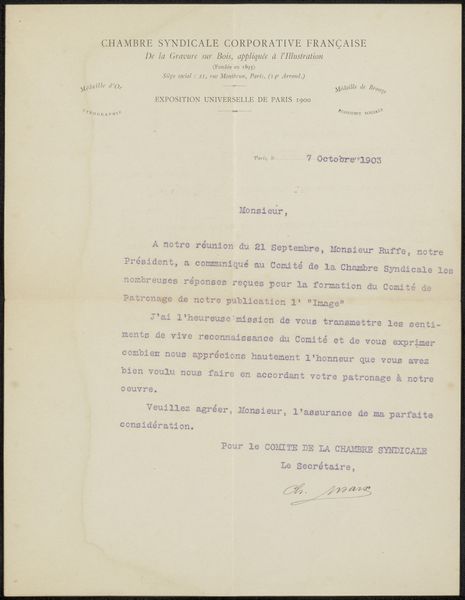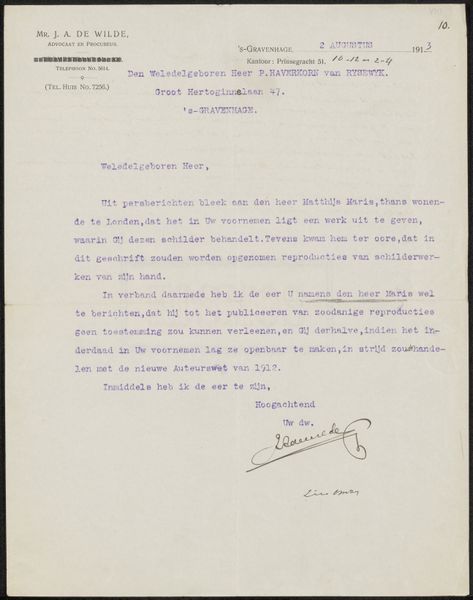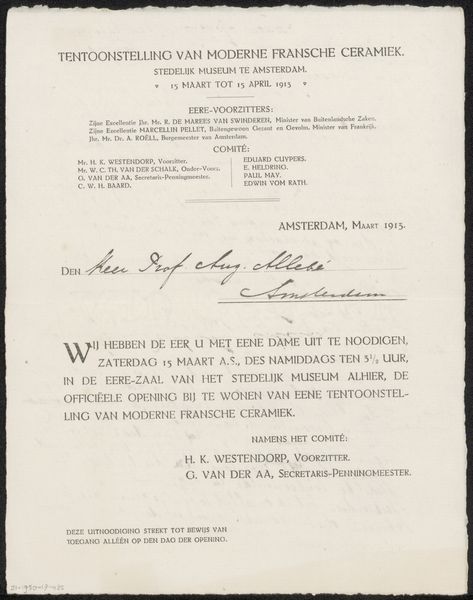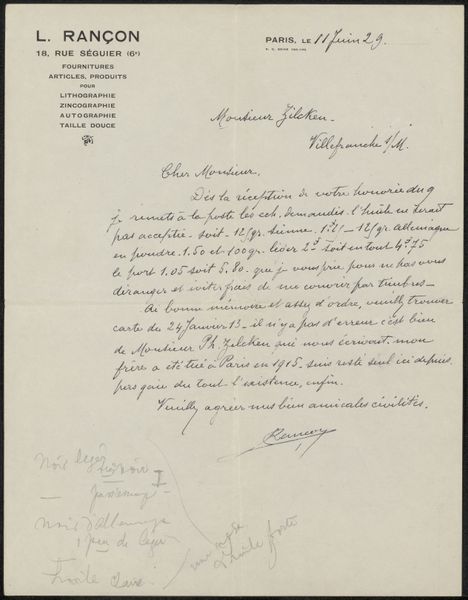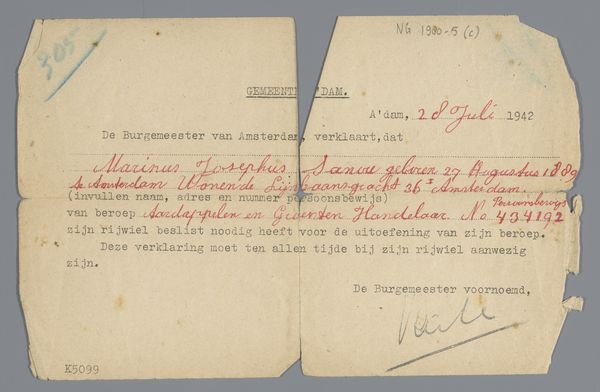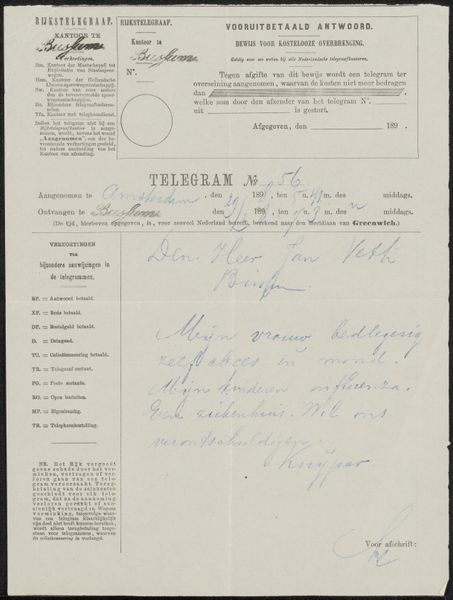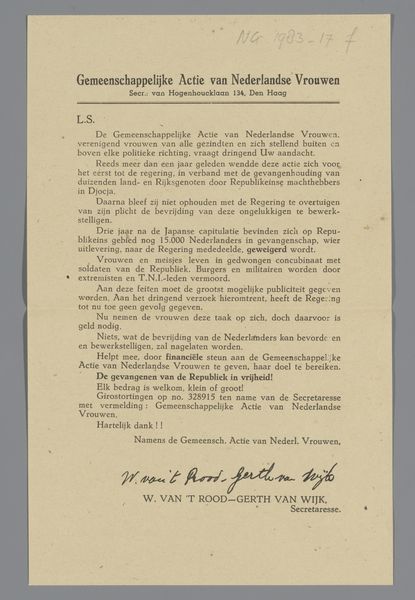
graphic-art, print, paper, typography
#
graphic-art
# print
#
paper
#
typography
Copyright: Rijks Museum: Open Domain
This polder tax bill, created in 1885 by D.J. Klink, is made of paper, printed with a stamp. It's a fairly humble piece of ephemera, but tells a rich story about land management and local governance. Consider the material: paper, made in bulk, made cheaply. The printing means that the same form could be delivered to many people, with individualized details entered by hand. The stamp asserts the authority of the local government, whose job it was to maintain the polder, or low-lying reclaimed land. The bill is an artifact of its time, reflecting the industrialized processes of the 19th century. It speaks to a society increasingly organized around bureaucratic systems, reliant on both mass production and individual accountability. It also reminds us of the labour involved in maintaining these vital polders and the systems of taxation required. Ultimately, this simple document connects materials, making, and context, giving us insights into the social and economic structures of the past, challenging our view of what is traditionally considered art.
Comments
No comments
Be the first to comment and join the conversation on the ultimate creative platform.
